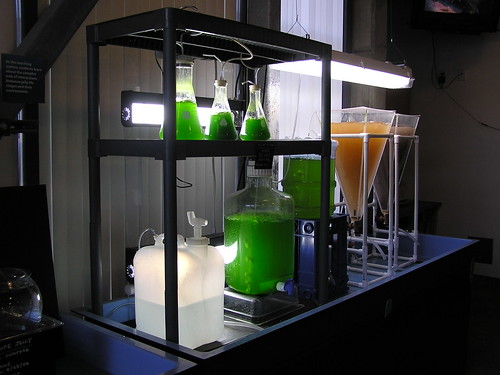You may remember my friend LG—the guy I chided here for driving his Audi S4, now an S5, like a fixated hypermiler. Well, he and I go back a long way, some 50 years: We were both in grad school, and I helped crew in some of his SCCA meets. Anyway, he wanted to set the record straight about his driving techniques.
First, I employ few of the techniques practiced by the hybrid-driving lunatic described in yr blog. Essentially I always try to minimize the effects of inertia while not interfering w/ following traffic. This doesn’t amount to much more than (a) braking as little as possible, (b) getting into 5th or 6th gear as soon as feasible and staying there as long as possible (with the sophisticated refinements of current fuel injection, lugging isn’t a problem), (c) only speeding downhill, and (d) coasting through isolated or empty stop signs in 2nd or 3rd gear (the only tickets I’ve gotten in several years were for this maneuver).
My first race car was a used Austin-Healy Sprite. (I could almost run faster than it.) I took the SCCA competition license course at Wilmot, the little track cum ski resort across the state line in Wisconsin. The first year I raced there & at Meadowdale Raceway, I think, west of Chicago. I was a cautious if not cowardly driver that first season, & I remember being nerfed from behind in one race, by the class leader, Bob Somebody, as he lapped me coming around a corner. But I had one of the classier rigs at the track: a VW van to tow the Sprite on a custom-made trailer, and my friend’s Morgan as a chase car—all of them painted white w/ orange stripes & trim.
The second season I graduated to a Triumph TR3 that I bought from my friend Brooks Johnson,  the sprinter, jazz promoter & U. of Chicago law school dropout (Si Hersh was his dropout classmate), and which I spent a long winter tearing down to its frame and then rebuilding for racing. All the clever trick work was done in our garage on 54th St. by Jim Hartman, who, a year later, took an identical TR3 to Road America and, eschewing belts or a harness because he had read that Stirling Moss disdained them, killed himself in a rollover on turn 11.
the sprinter, jazz promoter & U. of Chicago law school dropout (Si Hersh was his dropout classmate), and which I spent a long winter tearing down to its frame and then rebuilding for racing. All the clever trick work was done in our garage on 54th St. by Jim Hartman, who, a year later, took an identical TR3 to Road America and, eschewing belts or a harness because he had read that Stirling Moss disdained them, killed himself in a rollover on turn 11.
I don’t practice “hypermiling” out of any devotion to the environment (though I’m as Green as yr average sustainable citizen), or to save gas money (though I’m as close to insolvency as most American debtors), but only because I became transfixed by the mileage readout on my 2001 S4, and raising the numbers became a new expression of my congenital competitive instincts.
Yes, my driving style in the Audi S4 could hardly have been more extreme. My obsessive-compulsive capacities just overcame me, and squeezing another 1/10th of an mpg out of the display became the dominant purpose of my mobile life. But, the S5 has loosened me up. One example: In my regular 10-mile drive every day in Marin County, CA, I get on 101 at the bottom of a steep grade and I can’t resist standing on 360 hp and running through 6 gears as I drift over to the fast lane on my quick way to 90/100 mph (for an instant). So far none of the other Hot Wheels at that time & place have challenged me.
As for the 50 years, I’m aware of some diminution of my reflexes & I’m more cautious making certain moves, such as quickly changing lanes in traffic. Some of the ergonomics of the S5 are awkward, such as the large mirrors on the A pillars which obstruct my vision on certain turns, and I wonder if I would have been as distracted & irritated when I was younger. But the car seems very forgiving, the Quattro is super, and I can’t resist an occasional blast.
Is driving (for some of us) really all about competition? Leave us a comment.
—jgoods
Related posts:
Related posts:





















 The genius of the Algae farm approach is that it captures the CO2 emissions that are already being produced by most industrial complexes. The algae feed on the CO2, thus preventing the excesses gases from harming the environment. Since the Industrial workings are already in place (thank you, Industrial Revolution) and since the redirection of the CO2 emissions from those facilaties does not require any expensive retrofitting on site, it would seem logical (for both the environmentally conscience and the big business conservative) that algae farms might be the simple solution to a very complex and vexing problem. Now they just have to prove that this cottage industry is a viable and affordable decision.
The genius of the Algae farm approach is that it captures the CO2 emissions that are already being produced by most industrial complexes. The algae feed on the CO2, thus preventing the excesses gases from harming the environment. Since the Industrial workings are already in place (thank you, Industrial Revolution) and since the redirection of the CO2 emissions from those facilaties does not require any expensive retrofitting on site, it would seem logical (for both the environmentally conscience and the big business conservative) that algae farms might be the simple solution to a very complex and vexing problem. Now they just have to prove that this cottage industry is a viable and affordable decision. 


 Although todays diesel engines are not that much further ahead in fuel efficiency from the old ones, they far exceed them in clean burning and emissions. The new diesels do not share the rattles, shakes and plumes of black smoke that the diesels we are still familiar with did. That is thanks in a large part to a European market that remained thirsty for the diesel engine while the American car market grew fat on cheap gas. With a strong demand leading the way many of the major automakers were still investing money into the research and development of better diesel engines. Thus bringing the diesel engine to its strongest point yet and primed for a re-emergence on the American car market.
Although todays diesel engines are not that much further ahead in fuel efficiency from the old ones, they far exceed them in clean burning and emissions. The new diesels do not share the rattles, shakes and plumes of black smoke that the diesels we are still familiar with did. That is thanks in a large part to a European market that remained thirsty for the diesel engine while the American car market grew fat on cheap gas. With a strong demand leading the way many of the major automakers were still investing money into the research and development of better diesel engines. Thus bringing the diesel engine to its strongest point yet and primed for a re-emergence on the American car market. While the VW TDI engines have been in use in the GTI, Beetle and Jetta for years (if not decades), both Ford and
While the VW TDI engines have been in use in the GTI, Beetle and Jetta for years (if not decades), both Ford and 
